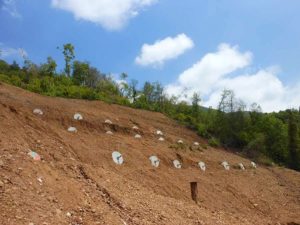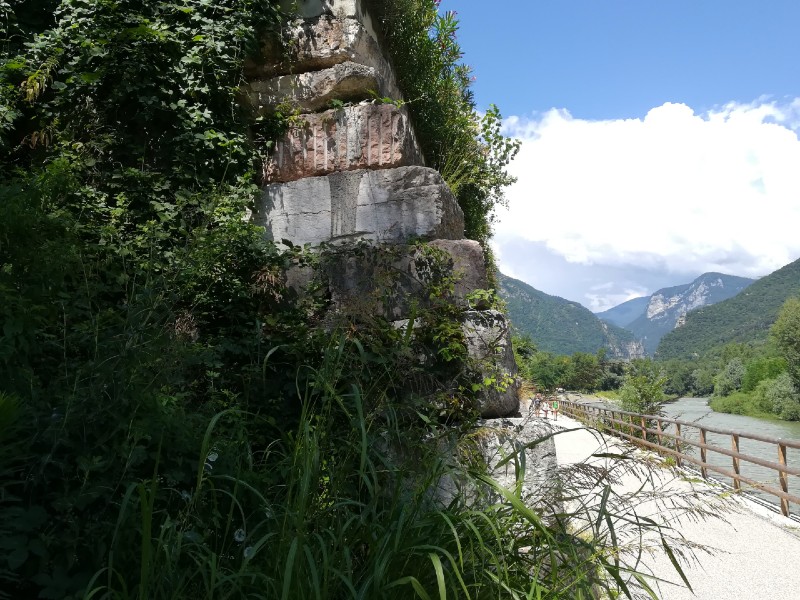Recently, the activation of landslides (both small and large) is one of the most widespread issues on the Italian territory. It is estimated that almost 500.000 landslides are currently active along the peninsula; therefore, new technologies have been developed in order to guarantee timely interventions with lower costs.
 How to intervene on an unstable slope?
How to intervene on an unstable slope?
The stabilization of an unstable slope can follow two different paths:
- Reducing destabilizing forces;
- Increasing resisting forces.
This latter type of intervention can further be divided into:
- Increasing status of load, e.g. by reducing pore pressure with proper drainage intervention (drainage trench or surplus water drainage tunnels);
- Increasing strength of the material, e.g. with injection of thickening agents;
- Suppression of the problem through retaining structures, such as walls or bulkhead;
- Introduction of external forces able to support unstable ground.
This last methodology includes passive floating anchors. It is about a new technology and it is designed as a widespread passive reinforcement able to absorb shear forces that develop along the landslide’s sliding surface. These procedures involve rods cemented to the ground, for their entire length; the rods work in a passive way, which means they don’t experience a pre-stress force before installation.
 How to install passive floating anchors?
How to install passive floating anchors?
Two elements make up the system: the external plate, visible on the surface, and the passive anchor, made of self-drilling rods. This technology is very efficient due to the steel bar’s dual role during the initial phase. In fact, it serves as both spike’s armour and armour-piercing element (because of a point at the top, inserted via rotation), making the installation fast and efficient.
Then, cement mortar is injected through holes on the tip with greater intensity; this operation enables to fully cover the rod and guarantees a proper protectionn. Lastly, the rod is fixed at the outer wall by means of a nut and a locking plate.
What benefits does this stabilization technology offer?
This technology presents characteristic aspects making it very remarkable; for example, it can be used in any terrain morphology, thanks to small size machinery. Furthermore, the operation implementation is very fast because drilling, installation and cementation phases occur simultaneously. Thereby, the two elements perform different tasks: the passive anchor improves the global deep resistance of the unstable ground, while the floating plate distributes the impact externally, contributing to the slope’s surface stability.
Since previous technologies suffer from economical limitations and complex installation methods, passive floating anchors are configured as improved anchorage techniques and alternatives to traditional reinforcements.
Condividi questo Articolo



